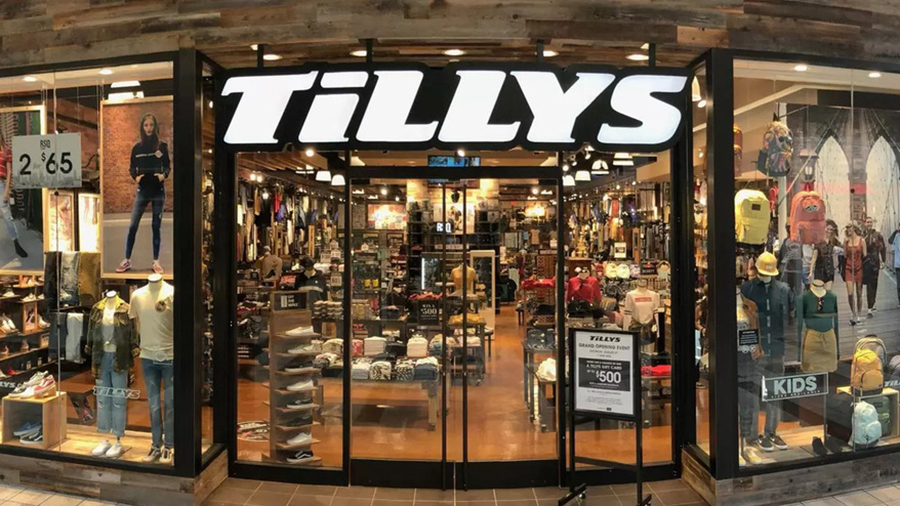Speaking Monday at the 2023 ICR Conference, Ed Thomas, president and CEO, Tilly’s, said the retailer was a “little disappointed” with holiday sales with the environment turning “a lot more promotional” than expected due to aggressive clearance efforts by key brands, including Vans.
“We’re generally not a promotional company,” said Thomas. “And one of the things we saw was some of our big brands, like Vans, were very aggressive out of the box in terms of promoting their own DTC business and their own stores. We were up against those challenges and we elected not to get into the promotional game to the extent that we saw others and I think that probably somewhat hurt our top-line results.”
Thomas also feels Tilly’s younger consumer is feeling the impact of overall macroeconomic pressures. He said, “I think the young adult and teenage consumer continues to be somewhat challenged with the economy as well as with inflation and gas prices, which has somewhat stabilized. I think it’s all coming together. So I think it will be somewhat challenging through the first half of 2023.”
Mike Henry, Tilly’s EVP, CFO and corporate secretary, added that part of the challenge for Tilly’s was that the company was one of the few retailers that entered the fourth quarter with inventory below last year on a per-square-foot basis and didn’t need to be promotional to clear goods.
“I think most of the other companies out there saw 35, 45 or even 75 percent inventory increases and had to promote their way out of a lot of things,” said Henry. “We were not in that position. We entered the quarter ending in a much more reasonable position relative to the environment relative to the performance of our business. And so we didn’t end up having to be in that hyper-promotional environment the way a lot of others were.”
Prior to its presentation, Tilly’s provided its sales for the holiday selling period and slightly reduced its fourth-quarter guidance, citing the impact of this year’s inflationary environment compared to the more favorable selling environment the prior year. Tilly’s fiscal ends on January 31.
The holiday performance and updated outlook include:
- Sales in the nine-week period ended December 31 fell 12.9 percent to $150.9 million;
- Comparable-store sales, including both physical stores and e-commerce, declined 14.4 percent year over November and December over year compared to a jump of 14.1 percent for the 2021 holiday period. Total comps inched up 0.2 percent relative to the comparable period of pre-pandemic fiscal 2019;
- Comparable sales in physical stores were down 15.3 percent over November and December compared to an increase of 23.2 percent during the 2021 holiday period. Comparable net sales in physical stores decreased by double-digit percentages in each of its major geographic markets. Comparable net sales in physical stores decreased by 8.9 percent relative to the comparable period of pre-pandemic fiscal 2019;
- E-commerce sales slumped 12.8 percent compared to a decrease of 5.7 percent during the 2021 holiday period. E-commerce sales represented 25.6 percent of sales for the 2022 holiday period compared to 25.5 percent a year ago. E-commerce sales jumped 37.3 percent relative to the comparable period of pre-pandemic fiscal 2019; and
- For the fourth quarter, sales are now expected in the range of $178 million to $180 million, down from previous guidance of $183 million to $188 million. EPS is expected to range from a loss of one cent to 4 cents versus previous guidance calling for earnings in the range of 2 cents to 6 cents.
Looking to 2023, one benefit will be easier comparisons as February 2023 will be the last month Tilly’s will be facing a double-digit positive comp in the year-ago quarter. Tilly’s comps have been running negative double-digit comps throughout 2022 against strong year-ago results driven by stimulus payments and other pandemic-related boosts.
Said Henry, “If we have a more stabilized environment that isn’t impacted meaningfully by recessionary impacts, we’d like to think that because of those easier compares, it would set up nicely for us in terms of being able to deliver top-line growth. We plan on adding 15 stores on top of the roughly 250 that we have today.”
Henry added that with inventories more aligned, product margins should improve this year. Product margins are still “a little bit below” pre-pandemic 2019 levels as Tilly’s required promotions to clear elevate inventories at the start of 2022 due to supply chain disruption.
Henry stressed that Tilly’s performance will depend on whether “something resembling a normal environment” arrives after three years of pandemic-driven uncertainty while noting that the potential for a recession could derail plans.
“We’re cautiously optimistic about what 2023 can be,” said Thomas. “It’s just with all the hesitation about what’s the environment really going to be like and we’ll adapt as we need to.”
Thomas added that he’s hoping stronger fashion trends also help revive Tilly’s top-line growth. He said, “There’s one thing that we’ve we haven’t talked about a lot but one thing that I think has impacted our business is during the pandemic there was a lot of creativity lost with the brands and even internally with us. There just wasn’t enough newness and there wasn’t really a dominant fashion trend. Bottoms were really strong, consistently. But there wasn’t enough newness throughout the industry. And I think we’ll start to see that come back and I’m a big believer, especially for the young customer, that we have to have constant newness and I’m expecting that to really help positively fuel our business.”
Photo courtesy Tilly’s
















